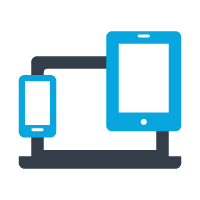Following the intense disruption of 2020 and its impact on both businesses and consumers, research shows that customer experience (CX) will be a differentiating factor in both the recovery and future growth of B2C organizations. But, how does customer experience management (CXM) fit into this picture?
First, it is worth pointing out the difference between ‘customer experience (CX)’ and ‘customer experience management (CXM)’:
- Customer experience is the feeling a customer gets; it is the overall perception they have of a brand, as a sum of all their interactions and exposure with and to that brand.
- Customer experience management is what the organization does to manage and optimize customer experience; it is a combination of all the strategies, processes, systems, and technologies that a business employs for this purpose.
For many, the task of enhancing CX is a massive one, with implications that reach into all corners of the organization. Often, teams tasked with customer experience management need a practical starting point and a plan that will move the dial on CX maturity.
Here are 12 steps to improve customer experience management by making changes to your communication:
AUDIT
The first tasks in this 12-step approach are aimed at sizing up the current status of your customer communications. This involves an audit of all communication that a customer receives. We recommend selecting one or two customer journeys to target in your first pass, for example, onboarding, servicing, renewals.
1.For your target customer journeys, print out every communication in that journey and place them so you can get the full picture (on a huge surface or wall). Place the communications in the order that the customer would receive them. Are you looking at a montage of assorted designs, tone differences and disparate calls to action?
2. Identify your best-performing communication – not the one you like the most, but the one that gets the intended results. Have a quick discussion regarding the performance of this communication and the elements you believe to be the defining factors in its success.
3. Take your team on a walk-through of each customer journey from the perspective of the customer and note the points in the journey where communication is lacking or could be improved.
DESIGN
Now you have a better idea of the scope of the project: you know which communication has achieved the best results, and you’ve identified gaps/issues in your communications that must be addressed to enhance the customer experience. The next part of this exercise is about design.
4. Design your communication standard, placing priority on achieving the desired results (hence identifying your top performer), adhering to best practice guidelines on print and digital layout, plus accessibility and readability.
5. Make certain the design displays the pertinent information clearly and has a single, primary call-to-action. Not only should it be immediately clear what the communication is about, it should also be obvious to the customer what they are expected/encouraged to do.
6. Testing is an important part of design. Allocate plenty of time and resources for assessing adherence to design guidelines, accessibility requirements, and regulatory compliance. Use A/B testing to help you refine the message and the call-to-action, to get the best possible result.

ALIGN
The outcome from the 6 steps you have taken so far, is a design template on which all future communication will be based. Now you need a plan to align all your communication so that it is clear it comes from your company, has a consistent brand voice and something else.
7. Build out a plan to align the creative design and tone of content to create a consistent customer experience across all the target communications.
8. Alignment is also about getting the timing right. Review the frequency of communication across the customer journey. You want to avoid having too many communications in a brief period or long gaps between touchpoints.
9. The next is a tricky one, but vital – you need to align the objectives of all the teams involved in communication. To create a consistent customer experience, everyone must buy into the plan and adhere to the strategy.

ENHANCE
Your customer journey is now supported by communication that is fit for purpose, built to achieve the intended results, and aligned in both design, tone, and timing. Well done on reaching this point! To maintain this optimized CX, you need a strategy to continually enhance your communication.
10. Communication design needs to be refreshed regularly. When something becomes familiar, we stop paying attention. Design standards, best practice and regulatory requirements also evolve, and so a customer experience management enhancement plan must be updated accordingly.
11. Enhance the performance of your communication by listening to what customers are telling you – both directly through customer feedback and how they interact with each one. Build up your data, so that you can continue to refine your communications to optimize performance.
12. Finally, if this process worked for the customer journeys you selected, decide on your next target journeys, and apply the same approach.









